Construction is nearing completion on 445 Carroll Street, a four-story mixed-use building in Gowanus, Brooklyn. Designed by Opera Studio and developed and constructed by The Wooden Block Co., the 5,988-square-foot structure will yield a single 2,965-square-foot residential unit, 1,023 square feet of ground-floor commercial space, and a 2,000-square-foot cellar. The project is located on a 20-foot-wide plot between 3rd Avenue to the east and Nevins Street to the west.
The main elevation is composed of a hand-laid brick façade with various running bond patterns that spans the second and third stories and wraps around the southeast corner. A cornice line caps the masonry volume before the structure transitions to a dark gray stucco extension. The majority of the eastern elevation is enclosed in light gray finished concrete. Sidewalk fencing still obscures the ground-floor and entrance, but should be dismantled in the coming weeks as work draws to a close.
An axonometric diagram shows 445 Carroll Street extending 100 feet back from the sidewalk. The structure has a maximum height of 55 feet and reaches 45 feet tall along the street wall. The main entrance is recessed into southern elevation and positioned beyond a staircase that leads to the basement. On the rooftop is a stair bulkhead that sits in front of a sloped glass skylight. There will also be a rear green roof and a narrower secondary skylight.
The below Google Street View image shows the former two-story residential occupant of the property before its demolition.
445 Carroll Street’s anticipated completion date is slated for this summer, as noted on site.
Subscribe to YIMBY’s daily e-mail
Follow YIMBYgram for real-time photo updates
Like YIMBY on Facebook
Follow YIMBY’s Twitter for the latest in YIMBYnews




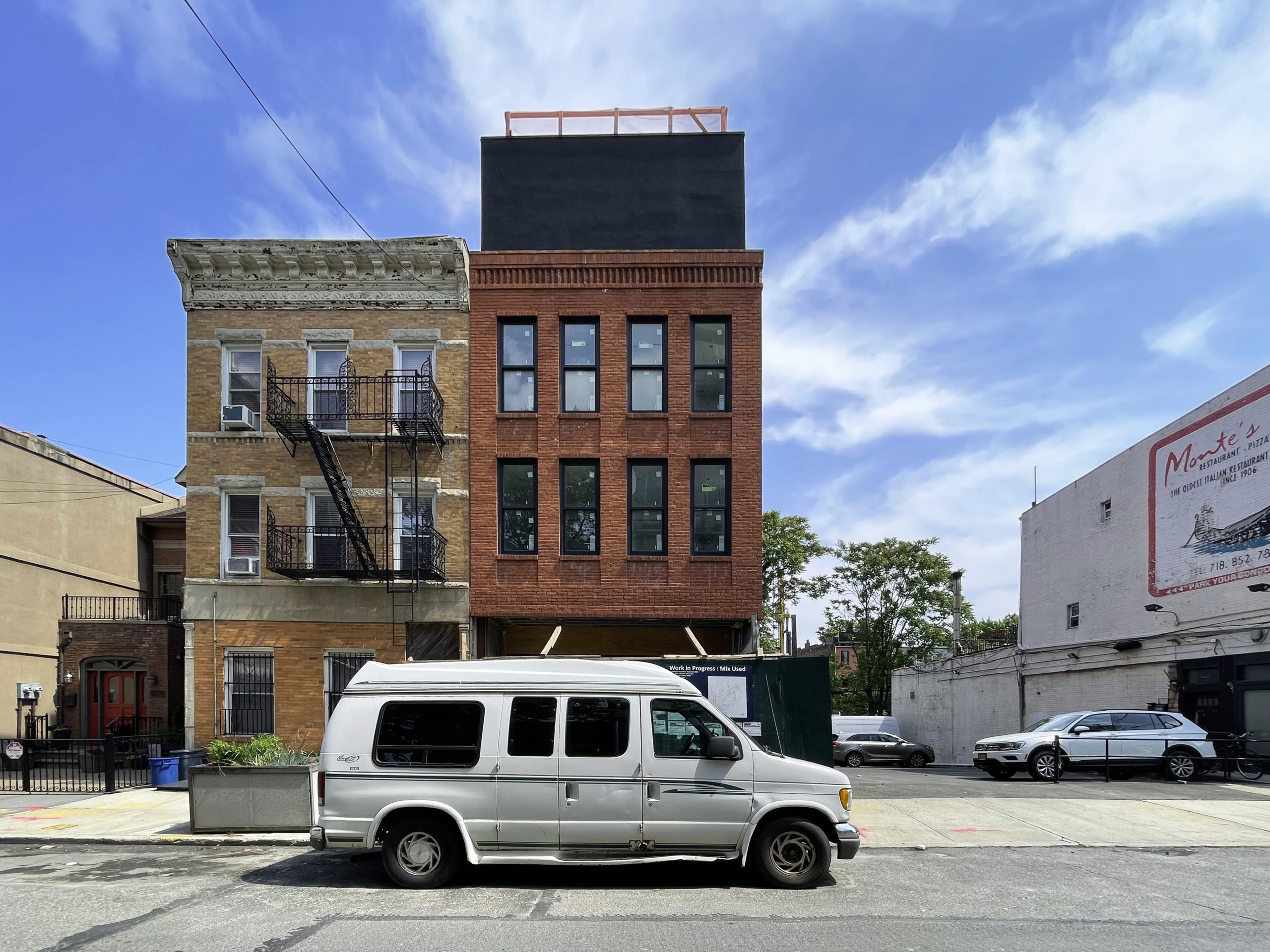
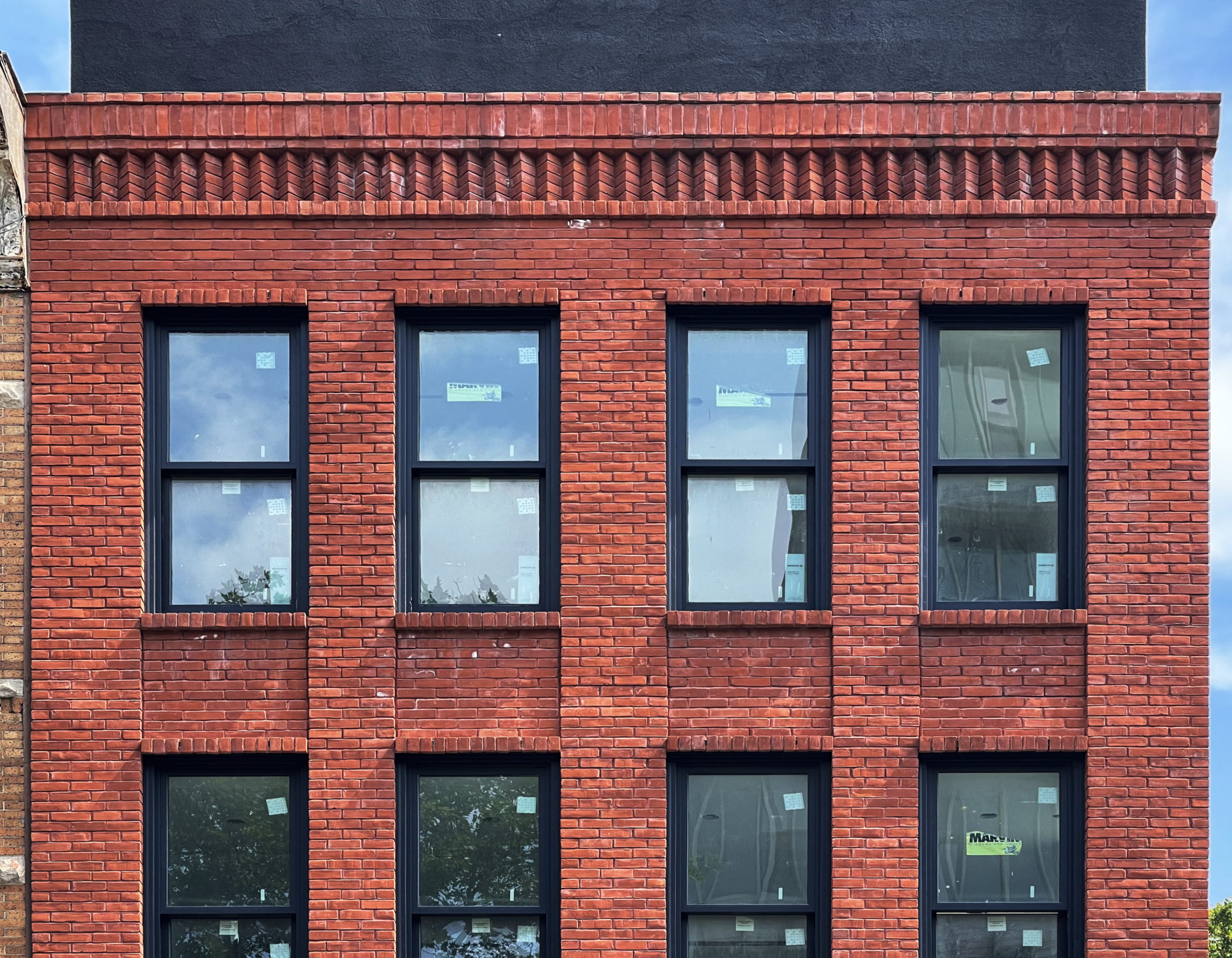
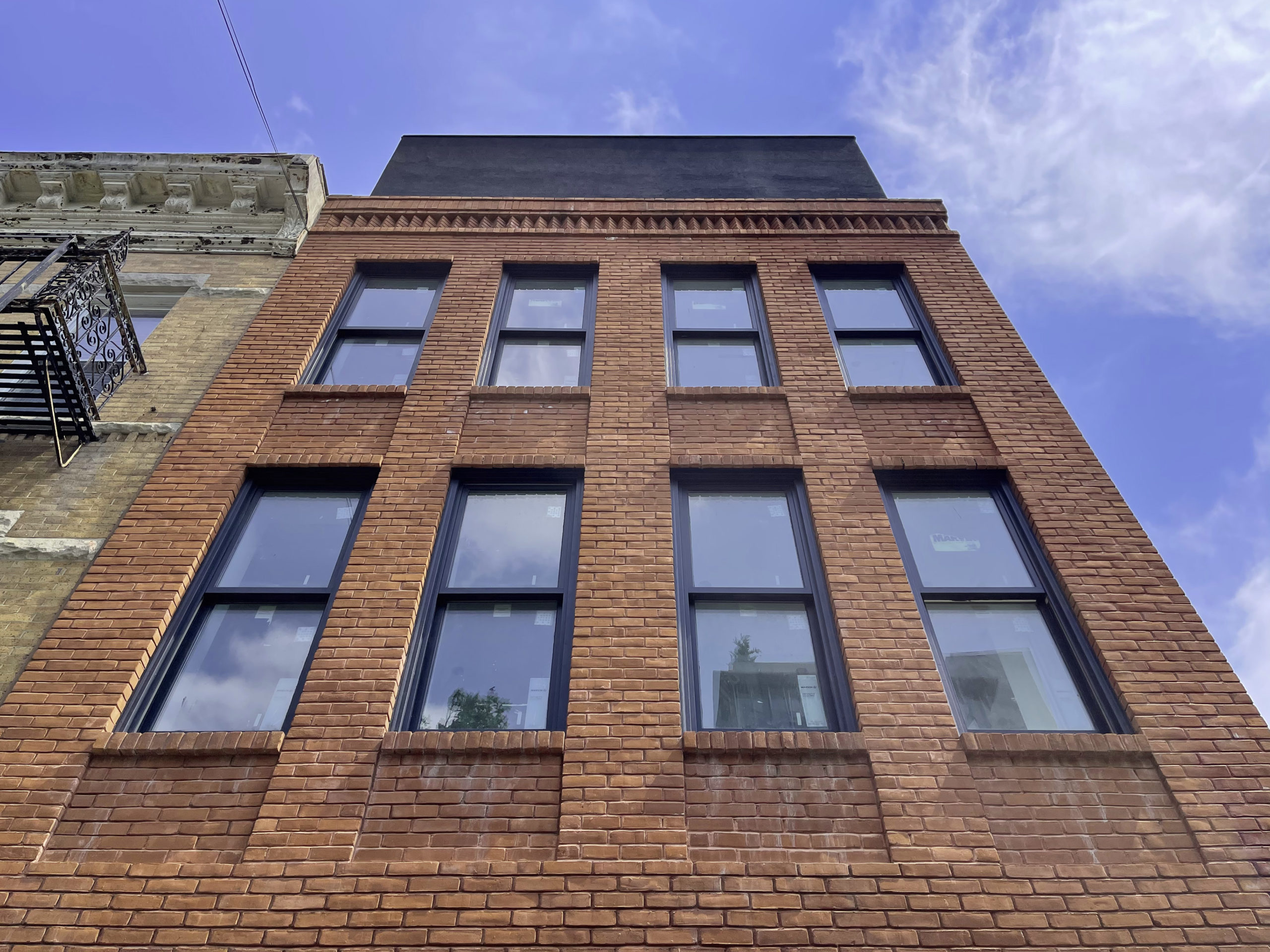
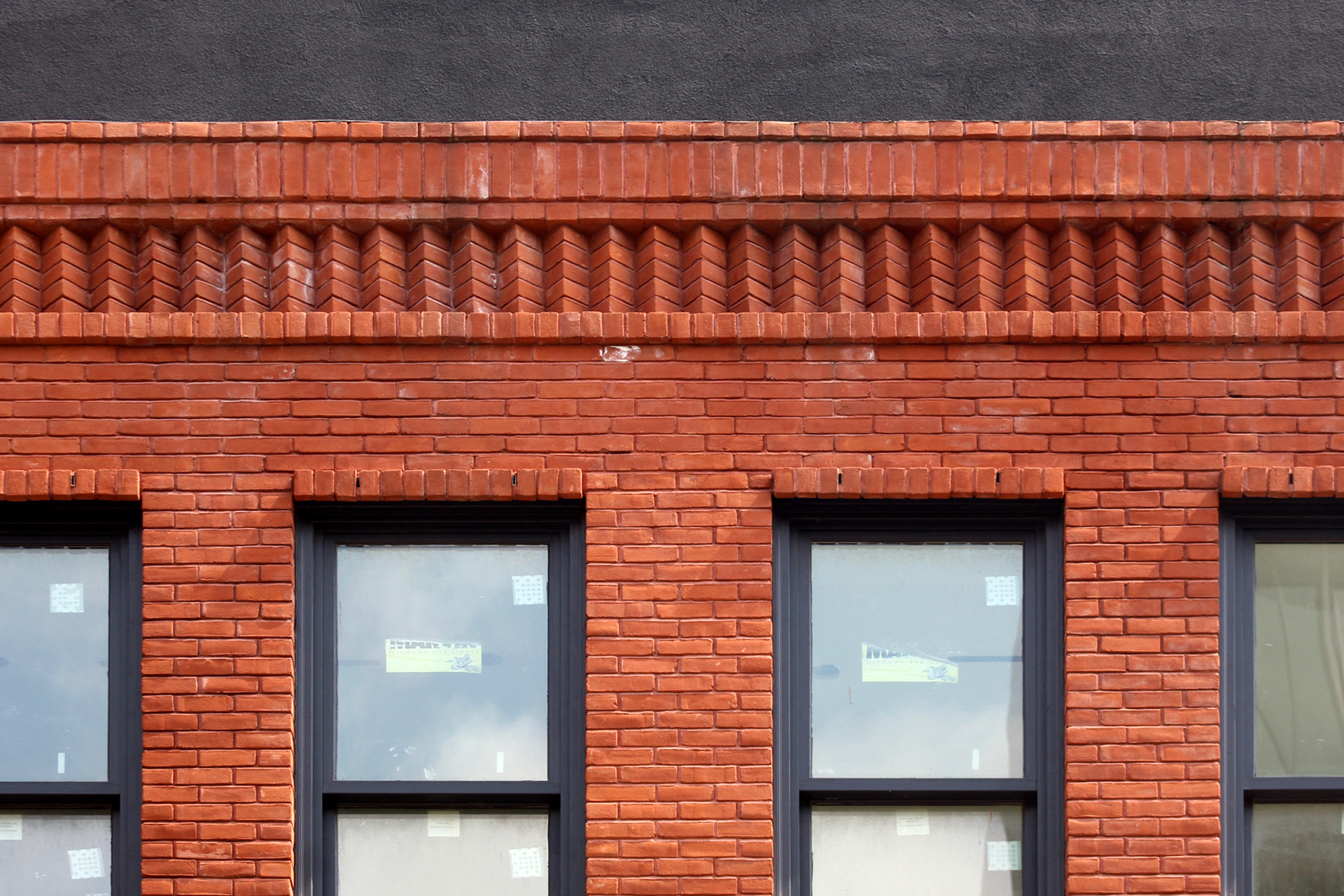


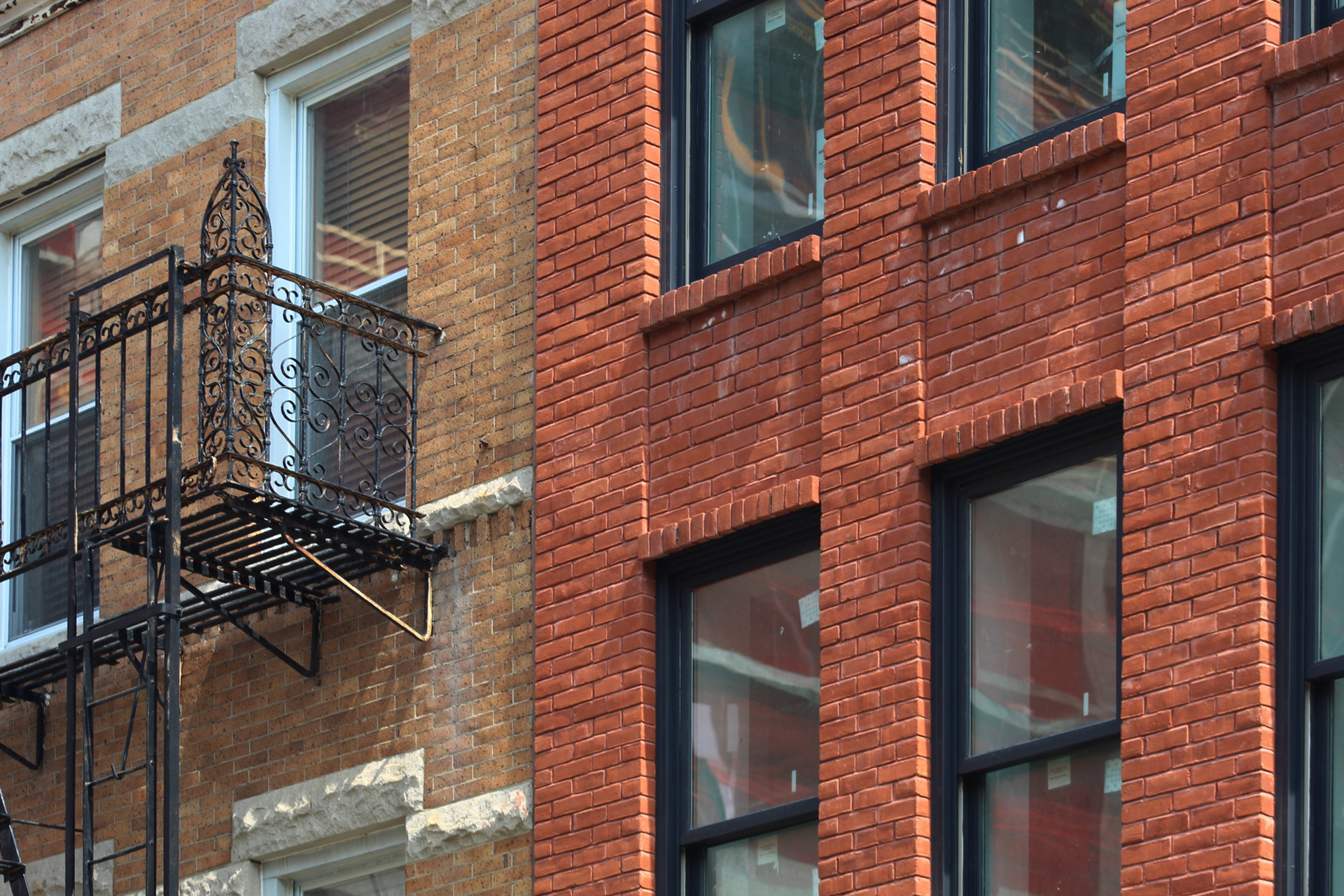
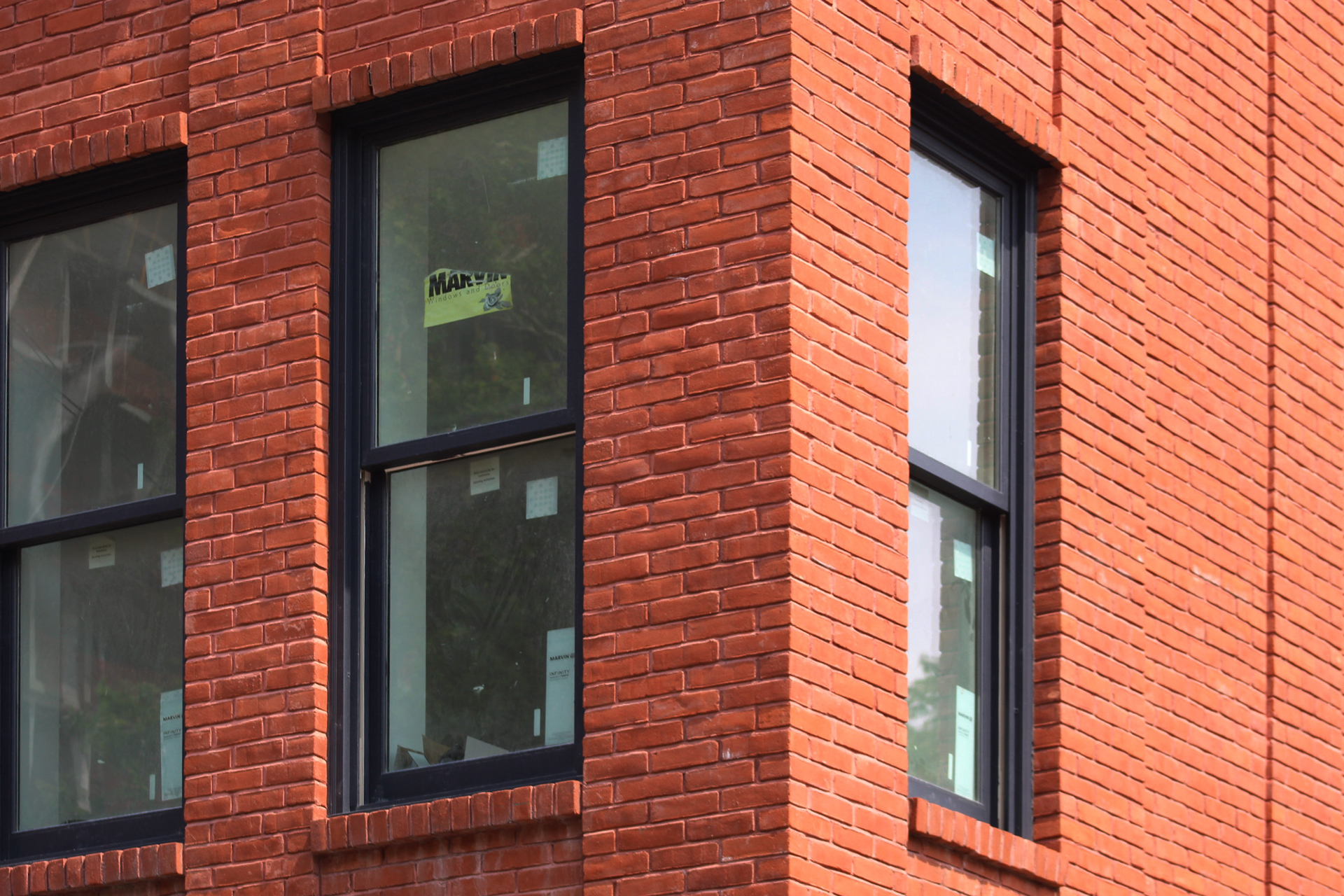
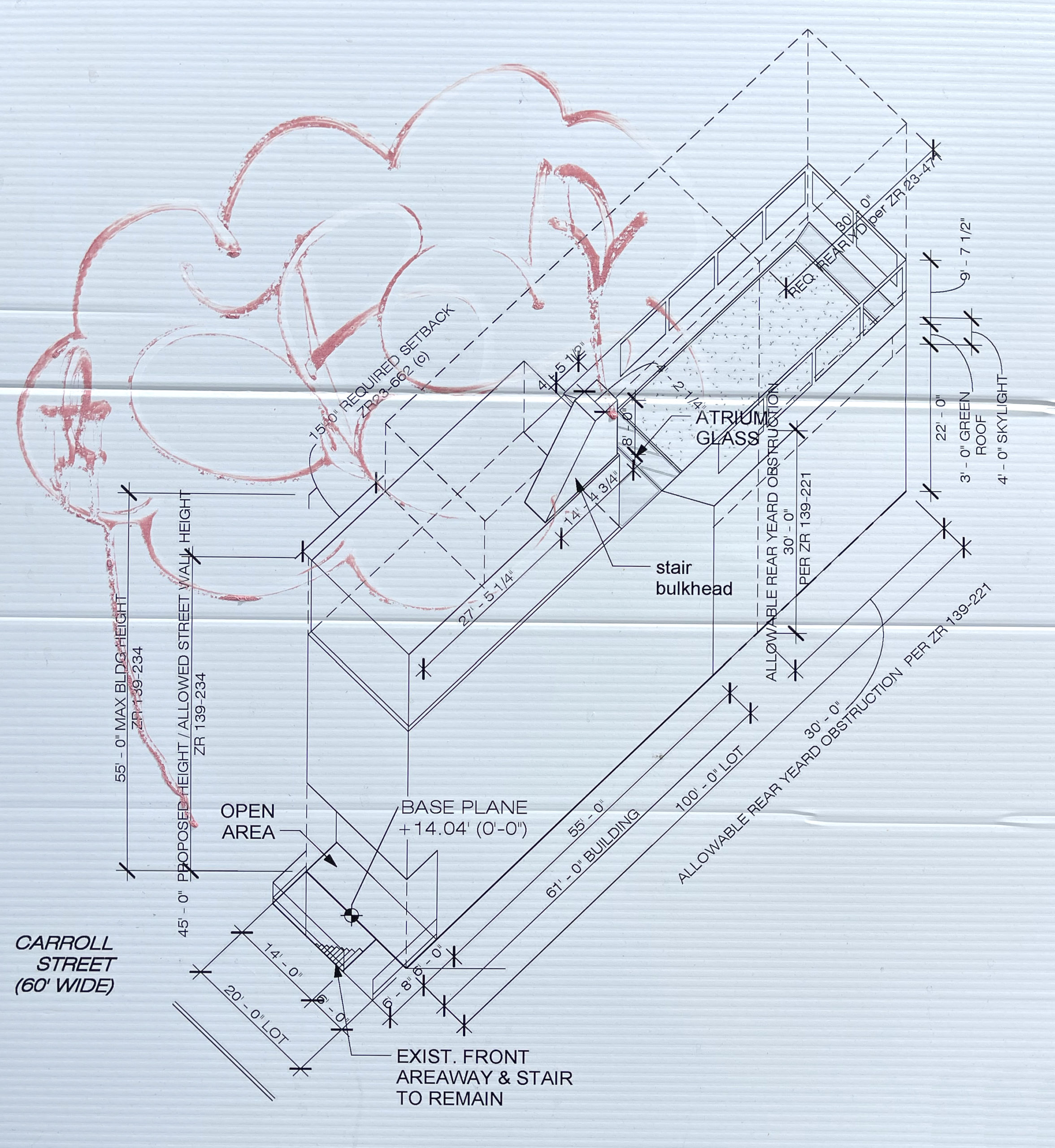

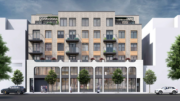
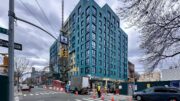


Excellent brickwork.
I guess you didn’t notice the oxidation or white stuff already showing on the bricks of this brand new building.
If it’s excellent brickwork how do you explain this?
That’s called efflorescence. It’s a completely harmless salt related chemical reaction cause by setting brick that had been stored in a subpar manner amongst other things. It has nothing to do with the quality of mason/bricklayer installation and usually will wear off in a single wet season or a pressure washing.
This brickwork looks excellent by every definition.
The more you know…
FYI
I think this building is wonderful.
Number one: Am I correct in stating that these aren’t individual bricks but pre -cast whole sections?
Number two: we don’t know if this is Primary or secondary efflorescence?
Primary efflorescence is named such, as it typically occurs during the initial cure of a cementitious product. It often occurs on masonry construction, particularly brick, as well as some firestop mortars, when water moving through a wall or other structure, or water being driven out as a result of the heat of hydration as cement stone is being formed, brings salts to the surface that are not commonly bound as part of the cement stone. As the water evaporates, it leaves the salt behind, which forms a white, fluffy deposit, that can normally be brushed off. The resulting white deposits are referred to as “efflorescence” in this instance. In this context efflorescence is sometimes referred to as “saltpetering.” Since primary efflorescence brings out salts that are not ordinarily part of the cement stone, it is not a structural, but, rather, an aesthetic concern.
Secondary efflorescence is named such as it does not occur as a result of the forming of the cement stone or its accompanying hydration products. Rather, it is usually due to the external influence of concrete poisons, such as chlorides. A very common example of where secondary efflorescence occurs is steel-reinforced concrete bridges as well as parking garages. Saline solutions are formed due to the presence of road salt in the winter. This saline solution is absorbed into the concrete, where it can begin to dissolve cement stone, which is of primary structural importance. Virtual stalactites can be formed in some cases as a result of dissolved cement stone, hanging off cracks in concrete structures. Where this process has taken hold, the structural integrity of a concrete element is at risk. This is a common traffic infrastructure and building maintenance concern. Secondary efflorescence is akin to osteoporosis of the concrete.
Guesser for gods sake, the building isn’t even done yet. Of course the building is dirty at the moment and has yet to be fully cleaned. Try waiting and using this wonderfully effective tool called “PATIENCE.”
So it should be called The Stucco Block Company…
I did not realize that guesser is an expert in masonry in addition to his known accomplishments in environmental remediation and waste water control.
So true.
The “expert” using the words “white stuff” as a description gets me
Once again , making the comments personal instead of an intelligent response.
Primary efflorescence is named such, as it typically occurs during the initial cure of a cementitious product. It often occurs on masonry construction, particularly brick, as well as some firestop mortars, when water moving through a wall or other structure, or water being driven out as a result of the heat of hydration as cement stone is being formed, brings salts to the surface that are not commonly bound as part of the cement stone. As the water evaporates, it leaves the salt behind, which forms a white, fluffy deposit, that can normally be brushed off. The resulting white deposits are referred to as “efflorescence” in this instance. In this context efflorescence is sometimes referred to as “saltpetering.” Since primary efflorescence brings out salts that are not ordinarily part of the cement stone, it is not a structural, but, rather, an aesthetic concern.[citation needed]
For controlling primary efflorescence, formulations containing liquid fatty acid mixtures (e.g., oleic acid and linoleic acid) have commonly been used. The oily liquid admixture is introduced into the batch mix at an early stage by coating onto the sand particles prior to the introduction of any mix water, so that the oily admixture is distributed uniformly throughout the concrete batch mix.[1]
Secondary efflorescence
Secondary efflorescence is named such as it does not occur as a result of the forming of the cement stone or its accompanying hydration products. Rather, it is usually due to the external influence of concrete poisons, such as chlorides. A very common example of where secondary efflorescence occurs is steel-reinforced concrete bridges as well as parking garages. Saline solutions are formed due to the presence of road salt in the winter. This saline solution is absorbed into the concrete, where it can begin to dissolve cement stone, which is of primary structural importance. Virtual stalactites can be formed in some cases as a result of dissolved cement stone, hanging off cracks in concrete structures. Where this process has taken hold, the structural integrity of a concrete element is at risk. This is a common traffic infrastructure and building maintenance concern. Secondary efflorescence is akin to osteoporosis of the concrete.
Guesser once again, going the extra mile to be the so called “expert” to disapprove and disprove other people’s comments and make them feel inferior to him, yet resorts to copying and pasting written material taken from Google and other people’s work
The brickwork on this is beautiful by the way and your petty comment is another attempt to sound smart, though the fallout from last Friday’s response to Thomas’ comment on 111 Washington Street makes it hard to believe
Who gives a crap whether I paste and cut. It’s the information that’s important.
I’ve never ever said i was an expert on anything.
I’m presenting another point of view sometimes , which somehow makes YIMBYS like you get upset and then you resort to personal comments
Yeah excellent brickwork. Too bad the structure reminds me of those old tv westerns where you see the facade of a building and nothing behind it.